
In a layman’s term, a classroom must entail some building with desks and a chalkboard where students and their teacher meet to engage on matters of academic interest. Thinking of a classroom in such terms is right but not complete. Over the years, technology has shifted the nature of learning through innovative approaches that include the online classroom. The good part about online classrooms is that they have nearly every advantage that one would expect from a normal classroom plus the extra advantage of convenience. In fact, online classrooms are more engaging, versatile and exciting than the conventional classroom because they bring together learners from multiple backgrounds and experiences.
Interesting Learning Techniques
Usually, online classroom teachers have various options of capturing and retaining the interest of their students. Comparative surveys between online classrooms and the walled classes have established that the online option gives the students more quality think-time because of the unique qualities of the teaching techniques. Naturally, technologically savvy learners are more inclined towards online classroom discussions than face-to-face discussions. Use of videos with impressive graphics helps to spur the interest of the learners in the subject. Besides, the videos aid enhance the understanding of the lesson. The level of concentration is higher than in a conventional setting and the discussions are less likely to veer off the course of the subject like they usually do in a traditional classroom. Overall, this advantage eventually translates into faster learning and long term interest in the subject matter.
The Advantage of Reduced Costs
You do not expect to incur the same cost of learning in an online classroom like you would spend in a conventional learning environment. Online classrooms require lesser logistics and most learning materials are availed for free on the internet. Many people prefer the online option because they spend less money and benefit from a variety of courses. Enrollment, registration and commencement of the courses is easier, faster, cheaper and highly convenient for people who distaste the logistical challenges that are associated with the traditional classrooms. In general, the online classroom offers high quality and convenient learning at very affordable costs. This option encourages people to pursue their career courses without ruining their financial stability.
The Flexibility of Learning from Anywhere
Nothing pleases the modern learner more than the advantage of learning from the comfort of their homes or offices. With online classrooms, you can even learn while holidaying on the beachfront resorts of the Bahamas. Naturally, learning is a continuous process that should never be hindered by the routine of the learner. Online classrooms allow you to explore the delights of technology as you broaden your knowledge on your preferred courses. Corporate executives who wish to study a special course, but have no time to attend a classroom have the option of the online classrooms to help them realize their dreams. Recent technological innovations allow for increased interaction of students and instructors, which helps to enhance the social intelligence of the learners. In every sense, this model of learning is the best solution for the fast-paced modern societies.
The Importance of Privacy of Classroom
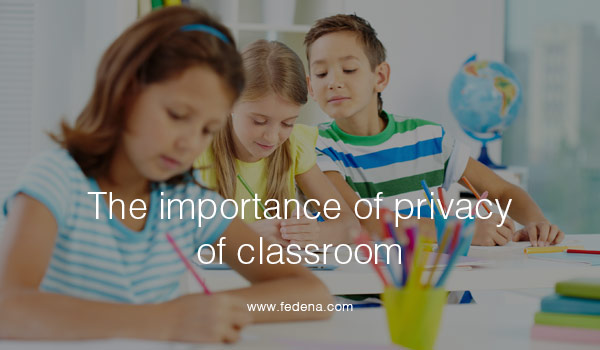
With technology storming the learning sector like never before, concerns over the privacy of classroom are on the rise. The educational software and applications industry has been growing at a staggering rate and is today valued at around 8 billion dollars. Educational institutes are constantly experimenting with new technological tools that are supposedly designed to improve the learning experience for children and more importantly, make the job of the educator easier. Unfortunately, there is no structured regulation regarding the use of these software applications in schools and a lot of questions are being raised about the security issues that these programs pose in ensuring the privacy of the classroom. In most case scenarios, parents or students are not required to provide their consent for creating, storing, or distributing the huge volume of records that are currently being generated in schools. This could dramatically affect preserving the privacy of classroom.
Sea of Content
When it comes to privacy of classroom, another significant aspect worth noting is the volume of content in the form of apps being used by parents and children. If a recent research is to be taken into consideration, more than 10% of all app downloads in the Apple App Store is comprised of learning applications. This would point towards a surge in interest to explore and try out the latest learning applications within a growing demographic that is becoming tech savvy. What is deeply concerning here is the lack of regulation of data sharing guidelines for these various software platforms. Most people just skip the “Permissions Screen” and just download the app without asking any questions. Very few people actually ask why, how, and when student information is being shared. The tremendous amount of data being collected from students and the end to which this data is being used is definitely something we need to be cautious about. Parents and students alike need to understand why privacy of classroom is a crucial issue.
Potential Downsides of Software
Today, there are a multitude of classroom management software that is supposedly aimed to provide an effective monitoring system for the behavior and implementation of discipline among students. Many of these applications do not address need to ensure privacy of classroom. Although on the surface, this would definitely be a positive tool for educators reaching out to a high number of students, there are negative impacts that such a system can have on students and their learning experience. Any software works on the basis of observed trends and algorithms. It’s basically about recording information, identifying a trend, and working it through an algorithm to arrive at certain conclusions. This could result in the pigeonholing of students and risk them being “typecast” in a certain “category.” They could be put on a certain pattern of learning, which is specifically designed for a “category” and will stay on that track long after he or she has undergone a significant change in his/her behavioral and disciplinary patterns. This is another reason why preserving privacy of classroom is important.
Outside the Classroom
Apart from obvious concerns of the privacy of classroom, there are privacy issues that spill out of the classroom. A lot of school buses have video cameras installed in them that monitor students from the time they get on until they get down at their designated stop. Are children comfortable being monitored? Who handles the video clips and how securely are they being stored?
It is the collective responsibility of educators, software providers, and parents to ensure that the privacy of classroom is maintained and that any data that needs to be collected go through a transparent and secure system that does not affect the overall quality of learning.
Future of Educational Technology: Edtech Trends 2016
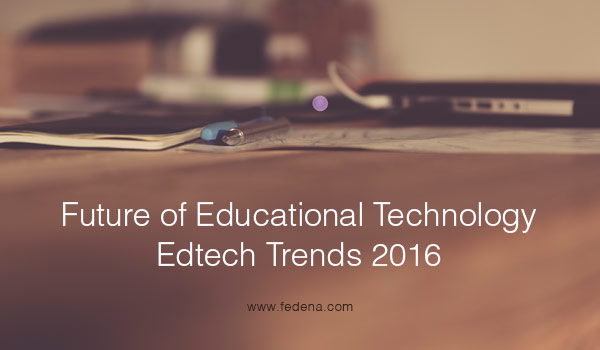
Now that we’ve popped the cork on 2016, we’ve also had some time to reflect on this past year. After all, 2015 did see a plenty of new technologies and solutions bloom while others faded from the limelight.
The Internet of Things, for instance, crawled into schools as wearables and connected devices became less expensive. Beacon technology allows teachers to push educational materials to students’ tablets at set times. Wearables track students’ heart rates and steps as they exercise in gym class. IP video surveillance systems are being hired to improve security. The rise of 3D printing was even more meteoric. Gamification, on the other hand, lost its place, in general the future of educational technology looks abuzz with a number of innovations and breakthroughs.
Let’s discuss a few pointers which would help us understand what we have in store for the future of educational technology in 2016:
- Schools should purposefully abandon things that have proved ineffective, and reinvest efficiency gains back into the classroom while planning strategic expansions.
- Teachers need to receive both training and professional development, only then will they understand only how to operate technology and how to use technology to provide new, engaging learning opportunities.
- To salvage ineffective professional development programs, schools need to redefine what it means to help teachers improve, re-evaluate existing programs and reinvent the way they support effective teaching at scale.
- Technology alone cannot improve education; change is a possibility only when school’s’ thought leaders bring together student-centered instructional design with differentiated training and professional development and work towards the future of educational technology as well.
- Educators need to teach students how to be responsible digital citizens, not only to safeguard their health and wellness but also to ensure their personal security and ethical digital behaviour.
- Schools should equally invest in culture & people development and in purchasing new tech.
A few technologies driving the future of educational technology would be:
- 3D Printing
- Cloud Computing
- Big Data
- IoT (Internet of Things)
- Augmented Reality
As we proceed in 2016, the Fedena team is already hard at work lining up our thoughts on a number of key themes, including technology leadership, training and professional development, and mobility. So check back periodically for insights into the future of educational technology.
Tips for Striking a Perfect Balance between Technology and Teachers

Integrating technology in whatever you do is no doubt an overwhelming task. As such, teachers find themselves pulled in different directions everyday due to the ever evolving technological advancements. So, how do educators find the ideal balance between technology and teachers? As a result, this article explores a few ideas that teachers can embrace to harmoniously integrate technology in the classroom. Read on to know how those in the education sector can strike a perfect balance between technology and teachers.
As you try to harmonize technology and teachers, it is imperative to note that technology is the literacy that is required in higher education and in the economy. It is the universal language that the entire world speaks. The coming generations are going to have a very tough job market whose competition will be determined by how technologically savvy one is. This does not however mean that job will not be available. It means that career opportunities will continue to dwindle as outsourcing and automation expand. And this is perhaps the biggest reason why technology and teachers have to be coordinated.
As such, technology and teachers have to strike a perfect balance in order to equip learners with both the required technical knowledge and the technological know-how needed to survive in the competitive world of hi-tech gadgetry. If technology and teachers are not synchronized, then we will have educated people who cannot fit in the current career world despite their educational accomplishments. And if technology does not get enough of classroom tutoring, then we will have a tech-savvy generation that does not have any professional clout to effectively discharge their career responsibilities. Therefore, both technology and teachers need to be synchronized to ensure that learning institutions churn out graduates who have mastered professional concepts and have the technological prowess to perform their tasks in the immensely automated 21st century working environment.
Technology and teachers will never be on a balance unless educators stop seeing education as a threat to quality teaching. Instead of technology and teachers viewing each other as enemies, they should they should complement each other. Both technology and teachers need each other. For instance, a teacher should tap into the many benefits of technology to ease the strenuous teaching process and technology ought to understand that it is teachers who gave birth to it. Technology and teachers cannot exist without each other. Each needs the other for survival- and both are very essential. Students who are exposed to technology should integrate it in their class work with the help of teachers and the tutor and the learner should see technological advancements as the fruit of the knowledge acquired in the classroom.
Finally, technology and teachers can be harmonized by those in the education sector to make learning through technology the bedrock of the curricula. This will make learning fun for the students and a lot easier for the tutors. It will help students stop viewing teaching as a boring impediment to their technology-filled lives. In the same vein, it will help teachers realize that technology complements technology and that the two do not clash in any way.
However, it is important to note that the balance between technology and teachers is not very healthy presently. Therefore, whatever measures that are taken to synchronize technology and teachers ought to be systematically gradual in order to be fully effective.
Salvaging Rural India with Virtual Classroom : An Introduction

Rural India is still struggling with widespread poverty, limited opportunity, and low teacher attendance rates in school. What role can the virtual classroom play in improving the quality of education and life?
In June last year, the Madhya Pradesh government took a leap forward by introducing an attendance tracking application on smartphones to tackle teacher absenteeism. The situation had hit at an all time low when a study found that some teachers were absent for 23 of their 24 years of service. A study done by the University of California pegged the fiscal cost of such absenteeism at $1.5 billion a year. Districts like Dhar and Burhanpur are beautiful, river-side, and have great historical meaning in our heartland. They can also be a bleak place to live.
The virtual classroom presents us with a great opportunity to tackle this problem. Willing teachers from around the world and the country can be tapped without their physical presence with the help of the virtual classroom. This would enable the rural children to get the quality of education they should be getting and their parents expect from schools.
When teachers, pundits, and theorists analyze our Educational system, they usually focus on urban and suburban schools and colleges, but rural schools make up for more than 50% of our country. Unlike many of the urban peers, students here fight with generational poverty, low quality of education, a lack of awareness and limited job opportunities. Virtual classrooms could easily help these children get a better quality of education and ensure a bright future ahead. Interactions with their urban peers, guest lectures by leading industry specialists, virtual tours of various places all over the world, would open their minds to the possibilities that exist through education all through the medium of virtual classrooms.
A report released by the World Bank last year in October suggested that India might be overestimating the number of it’s poor, but it still doesn’t change the fact that nearly 7% of the rural population of our country is still facing extreme poverty. The government taking an initiative towards virtual classrooms shows that they are trying to take a step ahead towards building awareness through higher quality of education.
With the Modi government allocating close to 100 Cr towards virtual classrooms, let us analyze what could possibly be the benefits of such a system and how we could salvage rural India through them. We will be taking an in-depth look at the classrooms and schools in rural India and tackling all the problems they face with the help of virtual classrooms.
In the coming months, we will study the number of states with the highest rural population facing poverty, the quality of education and life in such areas and how virtual classrooms could be effective in providing students with the quality of education they require to uplift their lives and break out of poverty.
How new technology in education can enhance online learning?
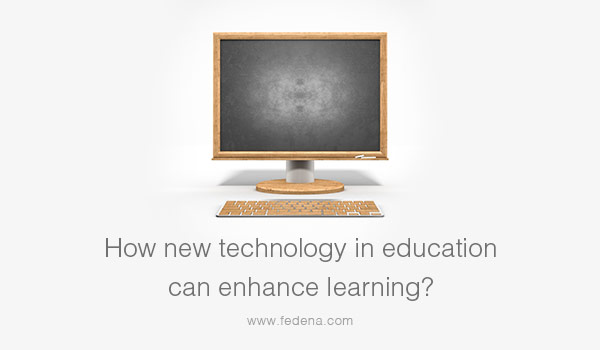
Gone are the days when a classroom meant blackboards, chalks and maps. Because of the use of so many new technologies in education, modern classrooms have changed dramatically. As a result, the learning experience of students has also improved. Enjoy the following features by using Uzity learning management sytem, it is a powerful way to foster the online learning and delivering interactive & engaging learning experience to all learners and instructors. LMS in education can enhance the learning of students by the following ways:
AUDIO VISUAL MEDIA: One of the best new technology in education is the use of audio and visual media. Students tend to remember images more than texts. When the boring black and white words in books are replaced by colorful, moving objects and audio, then obviously students will remember it better than reading directly from the books. Apart from this, YouTube is also a great new technology in education. It has specialized channels designed for education and there are lots of learning materials as well. Many modern universities are using audio visual media instead of text books.
MOBILE DEVICES: Mobile phones are the favorite gadgets of students and most of them end up spending half of their day using their phones. The idea of using mobile phones as a new technology in education is great. Many schools and colleges now provide their students with phones or iPad’s to improve their learning experience. As a result, students can directly access the internet and read online books and study materials. There are also many great apps which provides great online lessons.
ONLINE CONVERSATION WITH EXPERTS FROM ALL AROUND THE WORLD: Video conferencing is probably the best new technology in education. A great way to enhance the learning experience of students is to engage them in conversation about their subjects with experts in the field. Conversing with professors in their own college is not enough. Through video chatting or other virtual platforms, students can engage in active conversation with experts.Also, with the help of video tools, students in any college can also directly listen live to a lecture given at another college.
SMART CLASSROOMS: Another great new technology in education is the use of smart classrooms. Smart Classrooms means the use of Smart Boards and other devices which will boost classroom activities. The traditional boards used can be boring for students of the digital age. Smart boards are used now in most universities. It is basically an interactive whiteboard that uses touch detection for entering any input. It is also easy for the teachers to teach via a smart board.
CLASSROOM MANAGEMENT: While investing on any new technology in education, it is important for the management of the institution to keep in mind about proper classroom management. While using Smart boards or mobile devices, it should be ensured that proper software of effective classroom management is at place. It will guarantee that all the devices are properly used to enhance learning experience of students.
TECHNOLOGY EMPOWER TEACHERS ALSO: Many teachers don’t like the use of new technology in education, but they are not aware that new technologies empowers them as well. Teachers can constantly keep in touch with their students with the help of various social networking sites. Teachers can also use mobile apps to grade and evaluate students.
How Software For Student Helps In Advanced Learning

Ever since the first arrival of the computers, technology has always been seen as a den for scammers, cheaters and hackers. Within the education sector, technology is always treated suspiciously at the world of fake degrees, leaked exam papers and uncertified courses.
But education and technology don’t have to be separated-combining interactive software for student with other educational materials has proved to enhance the learning process and promote more effective and innovative ways of retention than textbooks can ever do. This article discusses how student software have transformed the learning process.
Students can record lectures
The software allow students to record their lecturers for future referencing. With these student software, students attending lectures will not have to spend their entire time scribbling tirelessly on notepads in order not to miss an important piece of information. With lecture recording software for student, students can record and listen back to all their classes without having to spend money on some expensive recording equipment. Most of these student software act as both notepads and audio recorders. Students can therefore, store a complete lecture in both audio and visual forms.
Assists students in revision
The revision software for student is now in big business and it appears like technology has finally achieved what we never thought possible-making revision enjoyable.This kind of student software uses revision notes to quiz users on what they have learnt from their revision. Other software uses some tools to hide and give clues for answers to revision topics, thereby making it possible for students to quiz themselves. Some of these software offer resources to create mind maps, revision charts, flash cards, quizzes and notes in colourful and fun programs.
Prepares students for exams
There are software for student available which prepare students for some exams such as GRE and LSAT tests used by graduate schools in their admission process. The software utilize a social networking style functionality that allows students to connect with fellow test takers. Students are able to peruse through unlimited revision material with notes, quizzes and more. Students are able to effectively keep track of their learning process which makes revision easier.Some student software feven keep track of the days and hours until each exam.
Allow students to plan
Organisation is a part and parcel of a healthy learning process, and this is the main reason why planner software for student is becoming more popular. The software not only saves on paper but also send alerts and remainders straight to your device.This type of student software features sharp and clean interfaces that allow students to map their timetables easily.
Wake up software
If you happen to be a sleepy student who always wakes up 30 minutes late for your lectures, then wake up software is for you. Some of this software will even give you weather updates such that you can know whether to carry an umbrella before leaving home. Other student software aims at correcting students’ sleeping patterns such that it wakes you up during your lightest sleep phase. This software does this by monitoring both your movement and the time you went to sleep. This will ensure you will wake up feeling fresh and sharp.
Software for student has enhanced learning by making the whole process both simple and enjoyable. Any student looking to elevate his/her grades should consider going for such student software.
7 Ways Information Technology is Changing Education

Information technology has the power to create and enhance new proficiencies in the education arena. Information technology in education revolutionizes most of the approaches we view, receive and perceive information every day. There has been a paradigm shift from textbook based education system to a more interactive and virtual education system across the world.
Here are 7 ways information technology is changing the face of education all over the world.
Multimedia content: One of the major changes brought about by use of information technology in education is the introduction of multimedia content. Multimedia learning meets the needs of all types of learning styles. Learning through the use of videos, pictures, text and games offer a better understanding of concepts than learning in the traditional manner. Tutors can also use online learning resources and apps to present information in an easy-to-apprehend manner.
Access to quality content: Digital devices have resulted in a paradigm shift from limited information to a vast resource of quality content available online. They offer personalization, by providing direct access to all kinds of content, are interactive and mobile. The access to quality content is also at a lightning speed rather than spending hours browsing through books to pull out required content.
Mobile learning: Classroom learning has almost become a thing of the past. The use of information technology in education has led to a new concept termed as “mobile learning.” Student can move from their desks, walk around, and learn new concepts. Students can now access learning modules from the comfort of their home, skype with other classes and involve in various collaborations for project learning.
Self-Monitoring techniques: One of the most appreciated changes that has been fueled by use of information technology in education is the plethora of tools available for self-monitoring and evaluation. There are numerous mock tests and applications available online that can offer real-time evaluation of the students. There is no need for classroom evaluation tests as was the case earlier. Real-time and factual test results offer an easy insight into the performance of students.
Focus on practical skill training vis-à-vis soft skill training: The utilization of information technology in education has shifted the focus of education from monotonous soft-skill training techniques to practical skill training. Most universities now concentrate their activities and projects to areas that can help students to show a portfolio of work activities to their future employers.
Students with disabilities: Recent studies have shown how the use of information technology in education has helped students with various disabilities to learn at par with other students. Tablets have helped many students with autism to communicate effectively. e-Books with text-to-speech features have assisted blind students or children with dyslexia to gain access to all kinds of learning material.
Cost-effective education: Many people argue that the use of information technology in education involves huge costs. However, if you look at it closely, resources such as eBooks, free online resources and virtual outdoor trips are in fact promoting better learning at affordable prices across students of all strata and ages.
EBooks are often cheaper and are available with interactive learning sessions, worksheets and linked dictionary tools. Think of the days when every change in information involved purchase of new books and resources. Due to digital learning techniques, most schools that subscribe to eBooks have access to constantly updated content at almost nil cost.
The availability of online resources facilitated by use of information technology in education makes informative content easier to discover, access, to change and disseminate. All these stages are crucial for teaching, study or even research work. In a nutshell, information technology in education has paved the way for digital learning.
EdTech Questions Parents Should Ask Schools before Admissions

Schools are the most important learning grounds to prepare your children for the future. The future is more clearly getting digitized and it’s high time that we ensure our children learn technology from an early age. In order to do this, you need to ensure your children go to the right schools. Teachers should be in a position to incorporate technology to improve the learning experience in classroom. A right school should be able to answer questions of how, where, when and what technology it plans to teach children.Good educational technology should prepare its students to become better entrepreneurs, innovators, self-starters, independent thinkers and be able to solve problems. As parents you have a major role to ensure you give your children the best education. Here is how to begin the edtec discussion:
- Is technology a top priority in the school and what specific goals does the school have?
The school should be able to explain how technology is of top priority and what measures are in place to ensure that the school is in the front line as far as technology in learning is concerned. Parents should look out for specific ongoing or start up projects, for example measures should be in place to ensure that all teachers are well trained on technology. - How is information communicated?
It’s of importance to find out how the school conveys information to the parents and community so as to be in the look out. Some modes of communication could be through email, the school website or through social media. - What type of devices will the child be exposed to and what is the access type?
As parents, you will be required to know the type of devices your child uses in school so as to make efforts to provide the same at home. Every student should have easy access to technology devices. - Are there policies against cyber-crimes and are parents educated on how to raise digital children
With the rising rates of cyber-crimes, it’s important to ensure that strict rules are put in place to curb cyber-crimes. Parents should also be educated to ensure there are no loop holes at home as well. - Are children allowed to bring personal devices and if so, what policies are in place?
Parents should get information on whether to allow their children to come to school with personal devices and what rules to enforce, and should discuss the same with their children. - Does the school support a child with particular interests on coding?
The school should have forums to expose students to things like coding. This will ensure that they improve on skills like innovation and problem solving. - How does technology ensure a better future for my child?
The technology used in the school should be relevant and fit into the learning system. - How can I help at home?
The school should have a platform for parents to continue teaching their children at home.
In this digital age, technology is important and so is the teacher. Technology has not come to replace the teacher but to act as an enhancement to learning. Technology is here to stay; so let us all embrace it and especially for the young generation.
The Uses Of Information Technology in Education
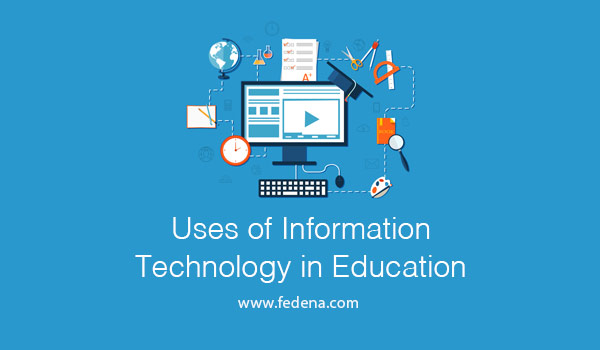
The evolution of technology has brought about with it, several benefits the world over. Apart from enhancing efficiency, it has turned the world into a global village and made access to information quite easy. The education sector has also not been left behind in tapping into the deep resource-well of technology. The use of information technology in education has become more than just an option. For effective learning, the education sector stakeholders have found ways of integrating the use of information technology in the everyday learning processes.
Access to learning material
The internet is full of a lot of learning material that the learner can access and use to supplement whatever is provided for in the classroom. There are e-books, revision guides and past examination papers that are available on the world wide web and students can take advantage of these to improve their knowledge base. Learning institutions provide computers and internet that the students can use to this end.
Continuous learning
In the modern world, you don’t have to be in the classroom to learn. Using information technology in education has made it possible for students to keep on learning, irrespective of where they are. Teachers and professors can send assignments to students and they can complete and submit them even without physically stepping into the classrooms and so learning never has to stop. Students can keep on learning even when they are at home. This has greatly enhanced efficiency in the education sector.
Sharing of knowledge
Through online discussion forums, students can share knowledge, engage in intellectual debates and generally learn from one another. Using information technology in education has basically made it possible for students from all over the world to come together and share experiences, the geographical distances notwithstanding. Information technology in education has also made students to develop an appreciation for cultural diversity and in turn, create a more tolerant and unified world.
Using audio and visual material as learning aids
The use of information technology in education has made it possible for tutors to teach students much more easily. By using audio and visual materials, students can develop a better understanding of the topics being taught. It is now much easier to perform demonstrations and put some practical aspect to the theory taught in class. Slow learners therefore have an opportunity to catch up with those who had grasped whatever was initially taught in class.
Distance learning
To adapt to a changing population with unique demands, learning institutions have employed the use of information technology in education to cater for this new demographic. Online courses have enabled most of the employed and young population to go back to class and get second degrees or additional certifications. It is possible to attend a college overseas without even getting out of your home country and at your own convenience.
Proper record keeping
It is possible to keep student records in a more systematic and secure manner using technology. Unlike in the past when records used to be kept manually and there were many cases of lost files, the incorporation of information technology in education has made it possible for safe and proper record keeping. Retrieving of information has therefore become much easier.
Why Should you Use Education Softwares in your Institution?
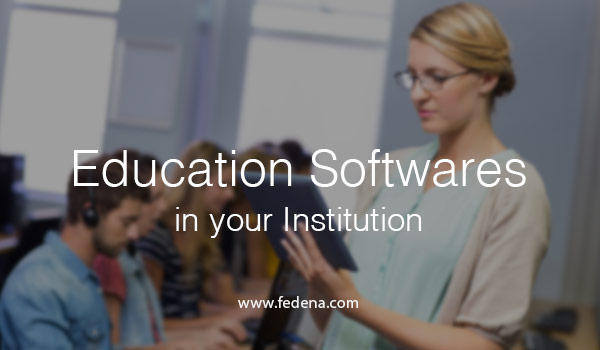
Educational software has a lot to offer to learners. In our last article, we have already discussed how education softwares are beneficial to very young learners. Not just young learners, an educational software can create independent learners in students of all sections of an educational institution. Read, why should you use education softwares in your institution.
- One of the best thing about the use of educational software is that they definitely make both teaching and learning a lot more interesting than the traditional methods. Say, if you make your students use education softwares for maths, you can surely see an increase in involvement in learning among the students, through fun learning of math concepts. An increased score in maths is the outcome!
- When students learn using educational software in a computer or on an iPad, they actually make use of a lot of senses together. It stimulates a lot of thinking and promotes hand-eye coordination, a lot helpful to students to practice good handwriting.
- Many educational software includes games and puzzles to help students learn. And these games encourage students solve problems on their own. Thus, a chance of self-confidence among the students increases as they start figuring out things on their own.
- Creativity is another major factor promoted with the use of education softwares in schools. This is because, an educational software offer interactive learning which further helps students to explore more; instead of just reading through the pages of a book!
- The learning capacity for each student varies to a good extent. And to keep a control on the learning experience of students, education softwares can be the best guide to teachers. An educational software lets each of the students to learn at their own pace, under their own control. If they are allowed to learn at their own pace and time, students can push their limits to learn things, without feeling down for being unable to do so within set time limits.
Technology is here to stay and is expected to bring about huge changes, as it is doing currently. Educational software is surely one such technology that’s enhancing the learning experience of students.
Is the Smart School concept feasible in the Indian society?

The smart school classroom – Video clips streaming through YouTube, students making presentations with teachers referring to three-dimensional (3-D) images to get across a complex concept. This is no sci-fi novel, but it is the mode of education said to be steadily replacing traditional, chalkboard classrooms in our resource-rich country. One of the most well-known schools in India adopted the shift from being a traditional school to a smart school with a lot of exhilaration. Only to discover that the electricity bills were shooting through the roof. We decided to take a balanced look at what the facts had to say about adopting to the Smart school…
The Smart School System
A similar classroom monologue which, more often than not, triggers a collective yawn among students and the apprehension of a weekly test to fret over, traditional schools have plenty of drawbacks which the smart schools tend to overcome, but due to the lack of infrastructure in India it is becoming increasingly difficult for schools to adapt to being a smart school. Some of the contents of a smart school constitute a library of digital content, an Intranet connecting all the classrooms, state-of-the-art infrastructure for interactive resources for teachers. The teacher decides if the mode of instruction is going to be audio or visual or both. The students with their ideas and questions, set their own track for learning. From primary classes to the senior secondary, teachers can assess students even before the class has ended. Also, with libraries getting IT-enabled, smart cards helping in keeping track of books issued giving the school insights on reading trends among teachers and students alike.
And it doesn’t stop just there. When carried home, the smart school system works as a virtual school, where parents, teachers and students communicate with each other. Using mobiles, tabs, social networking sites and email tools. Teachers can even upload assignments for students, and make important information available for parents to view. Students can use online forums hosted by the school to find community and discuss various activities and clubs they want to be part off. The impact of Smart schools on education is huge and cannot be disregarded.
Smart School Compatibility with the Indian School Infrastructure & Resources
The Information and Communication Technologies (ICT) revolution is acknowledged as the next big thing in India’s primary and secondary education sector. Education technology companies — headed by millennials — are flooding the market with teaching-learning equipment such as interactive display boards, laptops, Learning management software (LMS), school management software (SMS or School ERP), teaching and assessment software, science, maths and language laboratories and countless other products and services. The market for Edtech in India is estimated at $135 billion by 2020.
But, 52.75 percent of schools in the country do not have electricity, 12 percent of them are single-teacher schools and 42.75 percent do not provide libraries/book banks of any sort.
The 18.7 percent of India’s schools which have introduced computers to their students (Elementary Education in India 2010-11, published by the Delhi-based National University of Educational Planning and Administration), are private schools. With that being said, the biggest hurdle for any smart school in the country is the under utilization of technology and tech resources. The government is now focusing on bridging this divide – between private and government schools – through initiatives such as the Right To Education Act, Sarva Shiksha Abhiyan.
Verdict on the Smart School
It is clear that smart schools can deliver what they promise. But only if they are supported by a range of very expensive resources and infrastructure. From software to the labs that are equipped to be the learning hubs of the future and adopting schools must be prepared for the ever skyrocketing electricity bills, that is sourced mostly from mainstream power grids. So for now, the cost to nature remains unaccounted for. All though they do seem like a necessity, sustaining smart schools is a huge challenge India will face in the coming years.